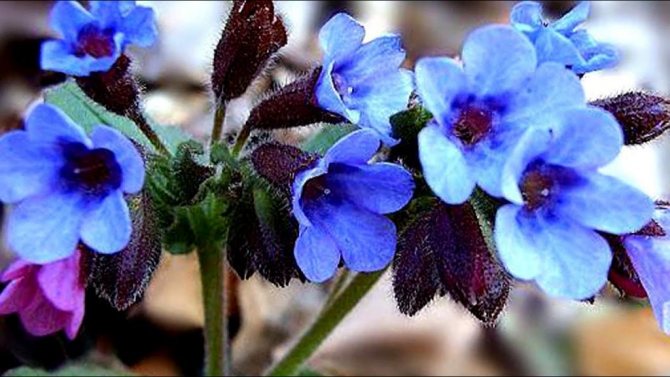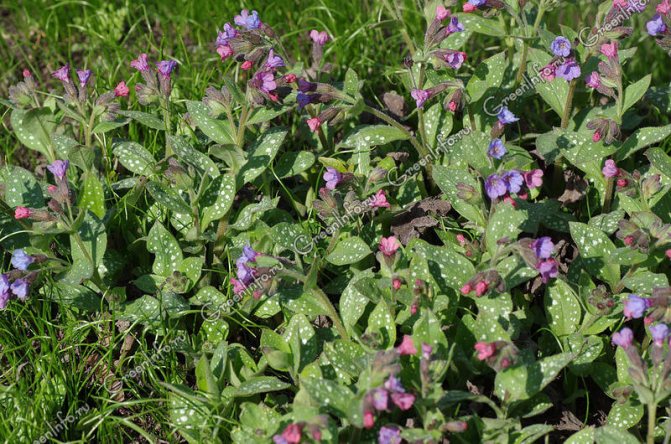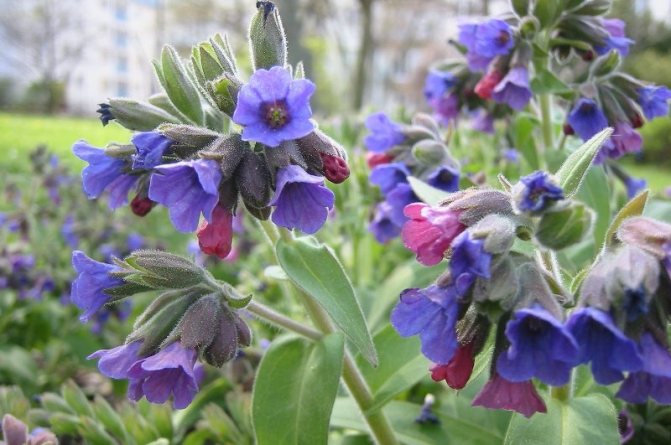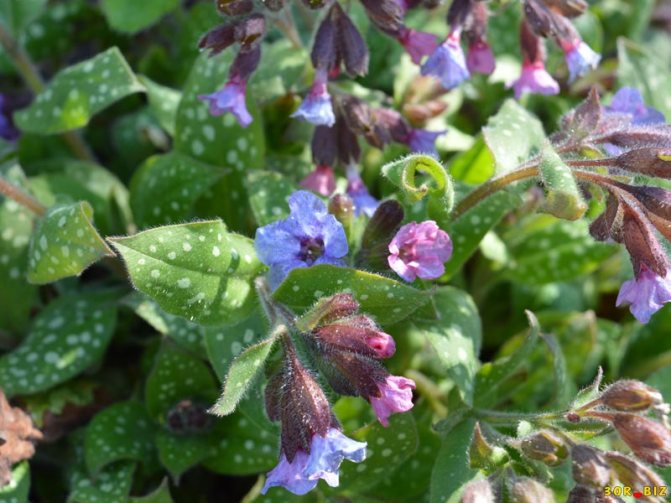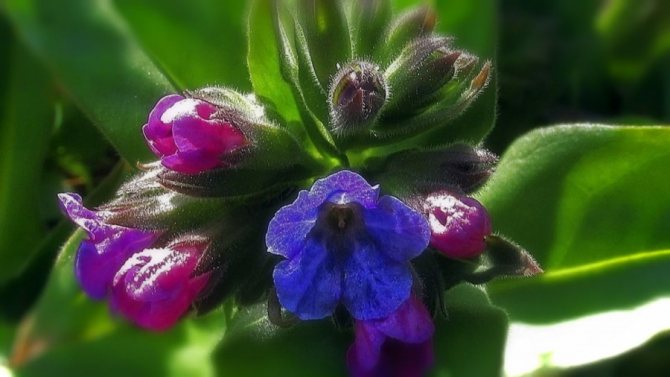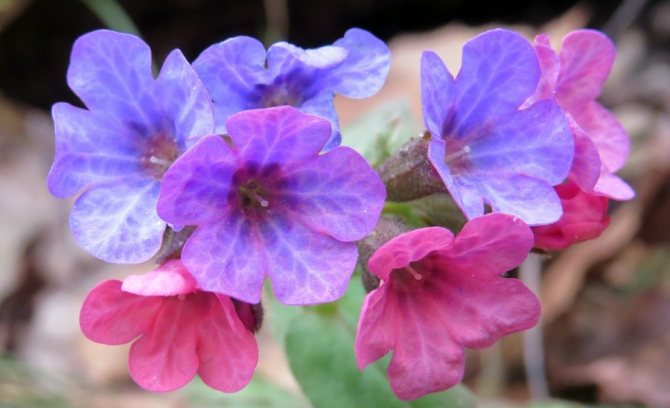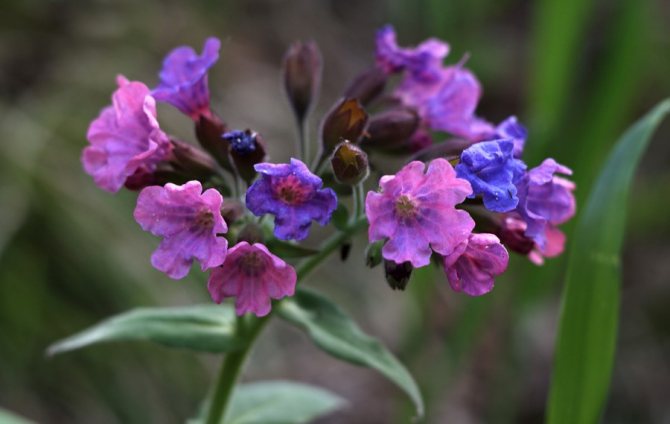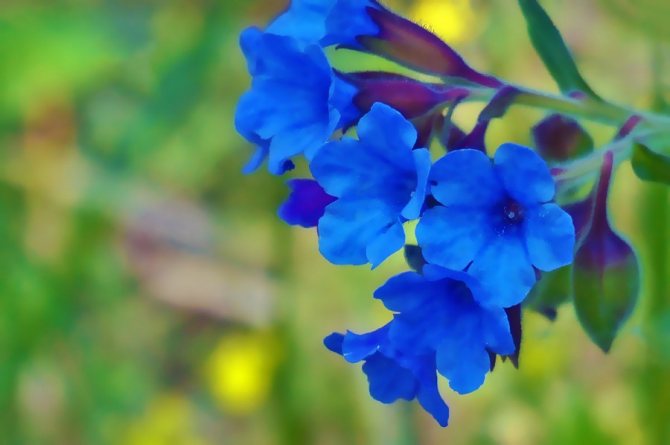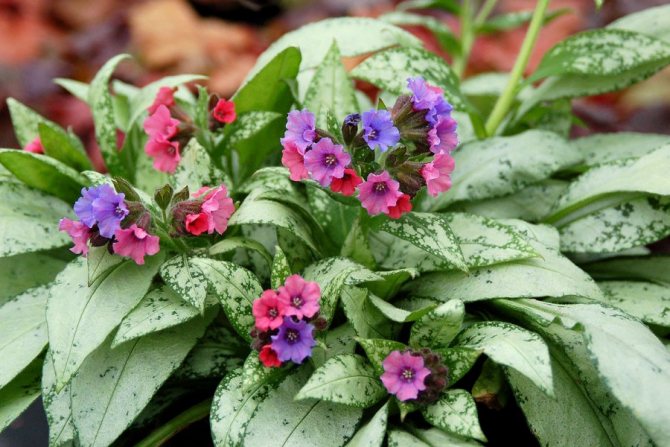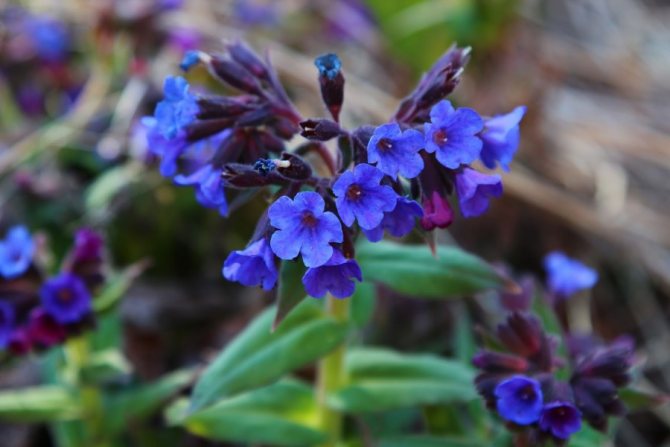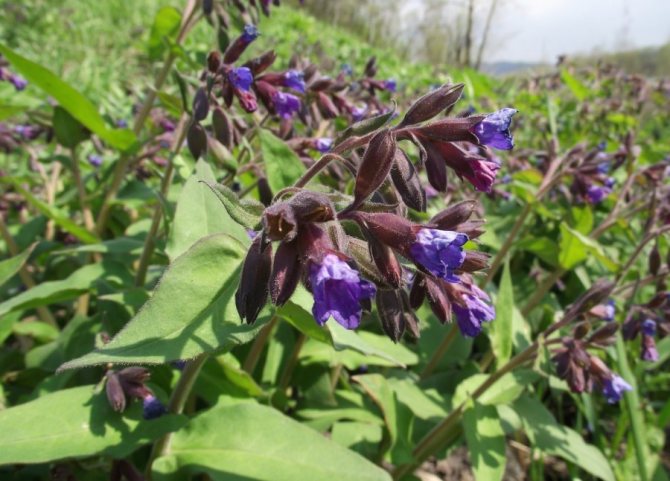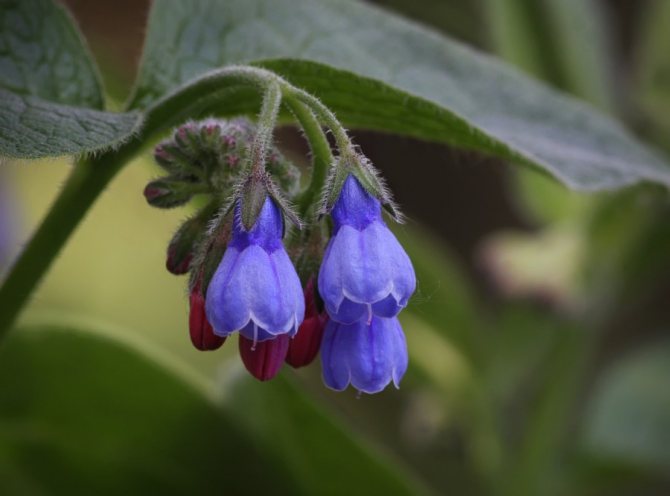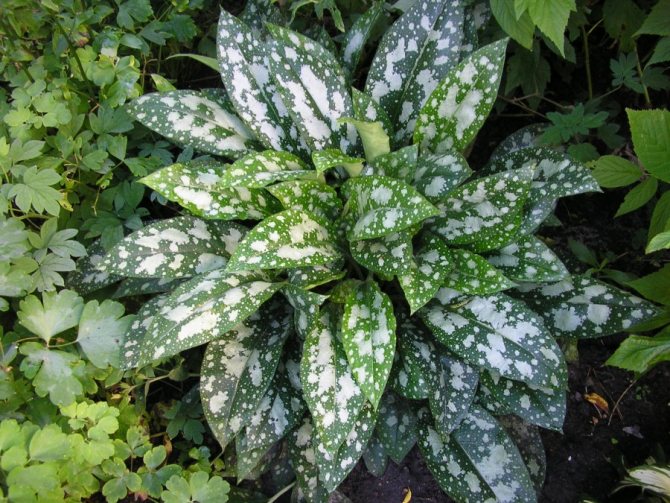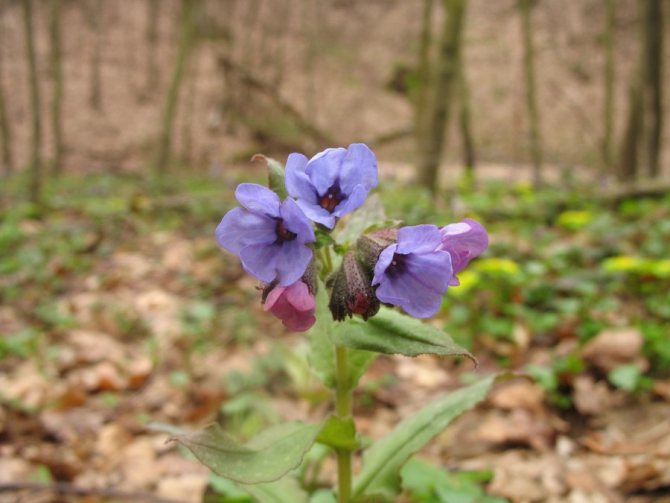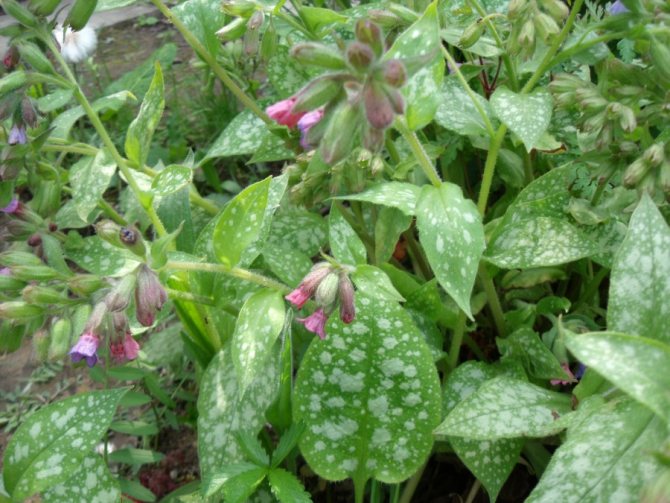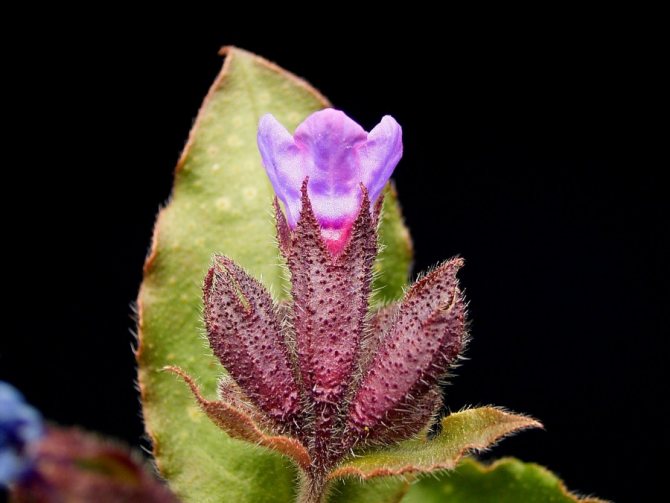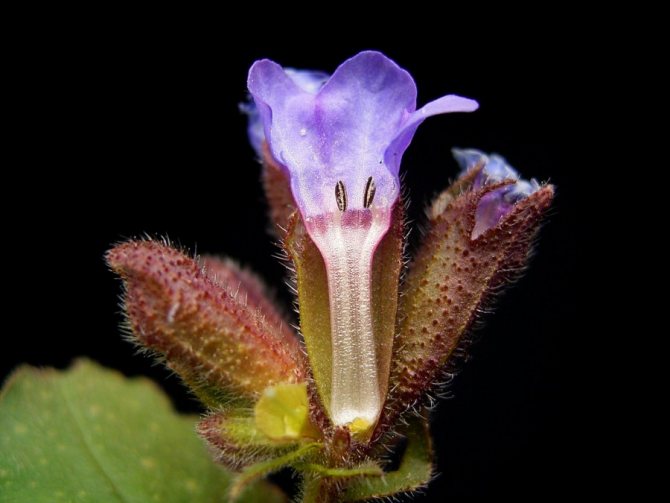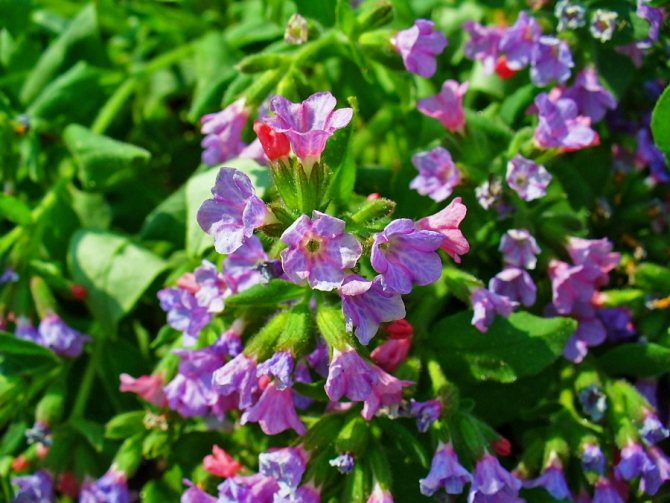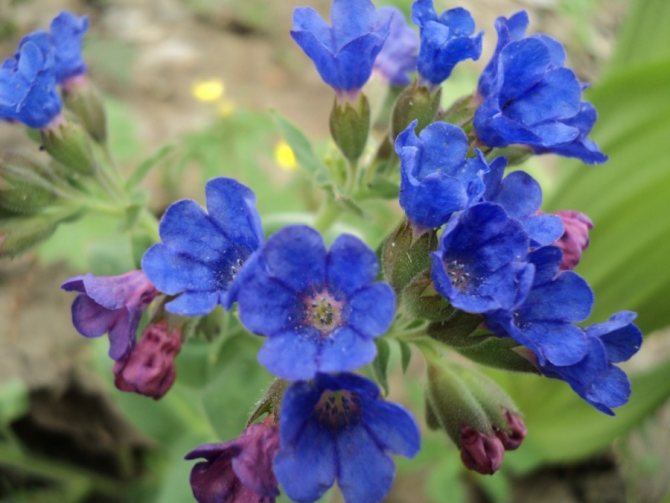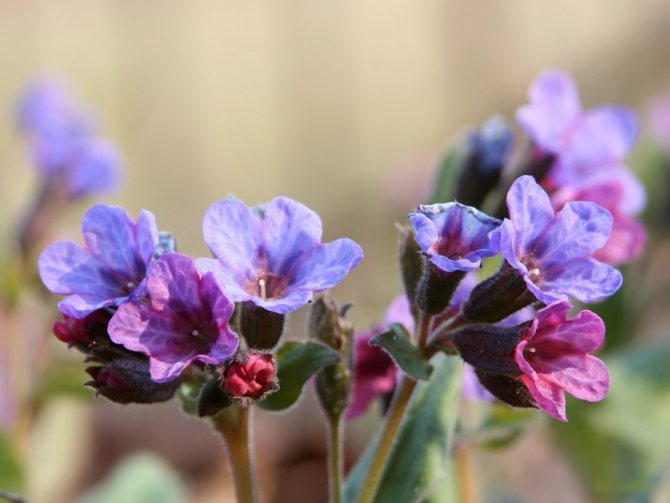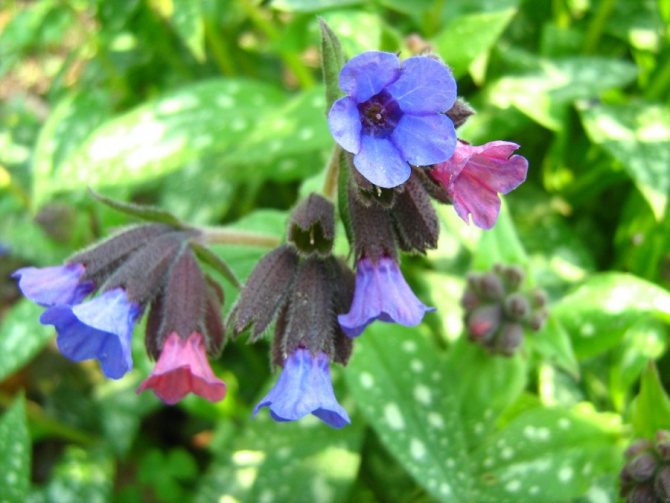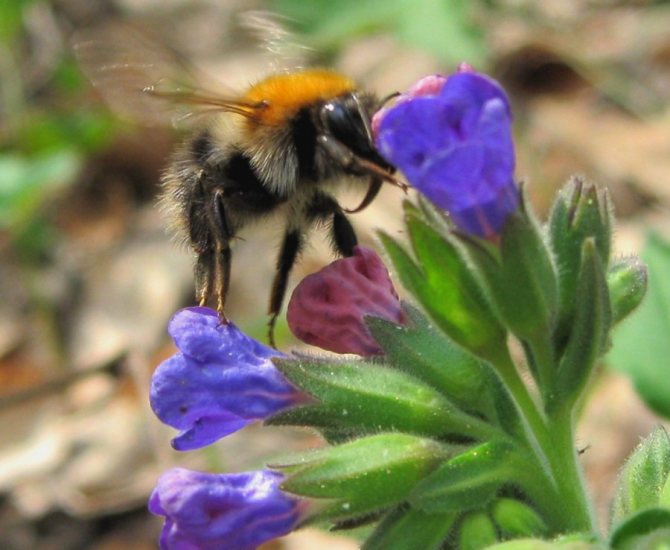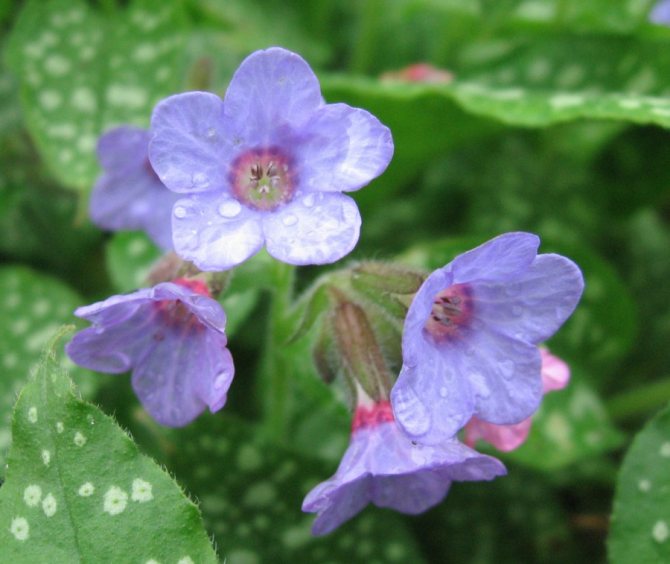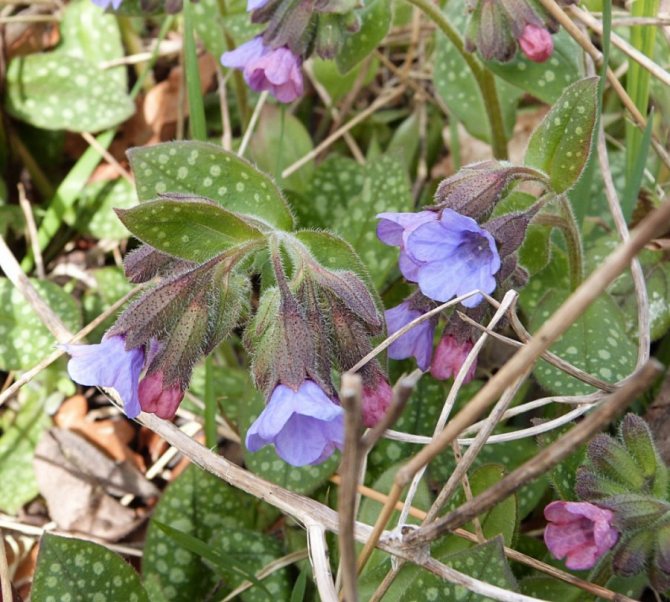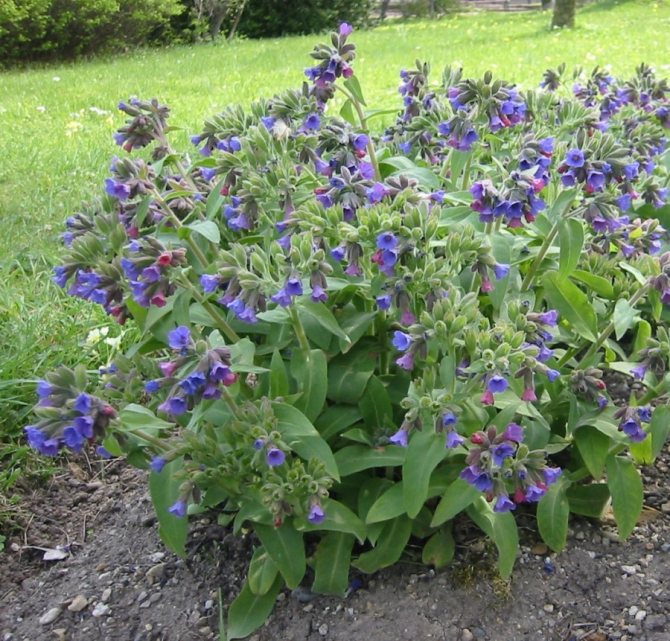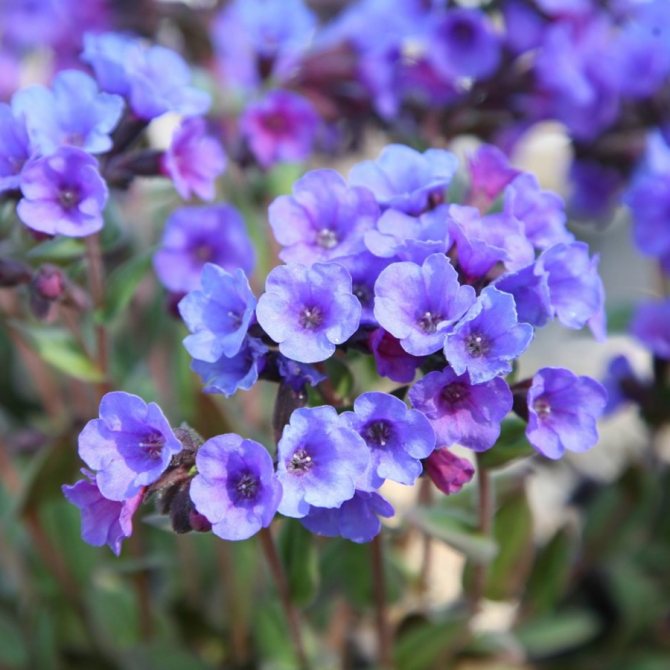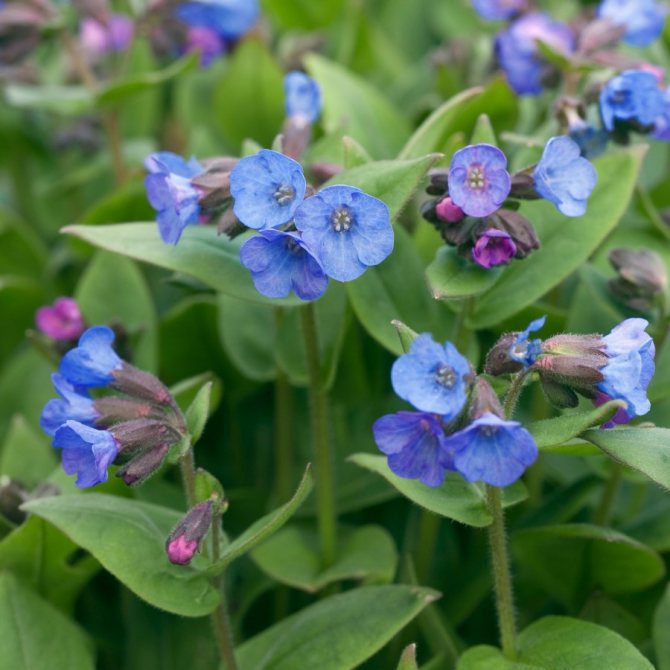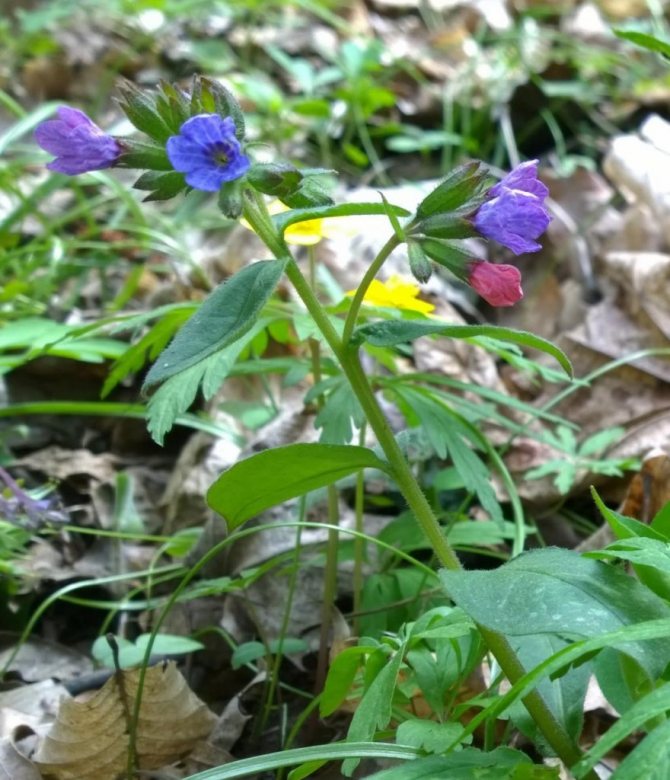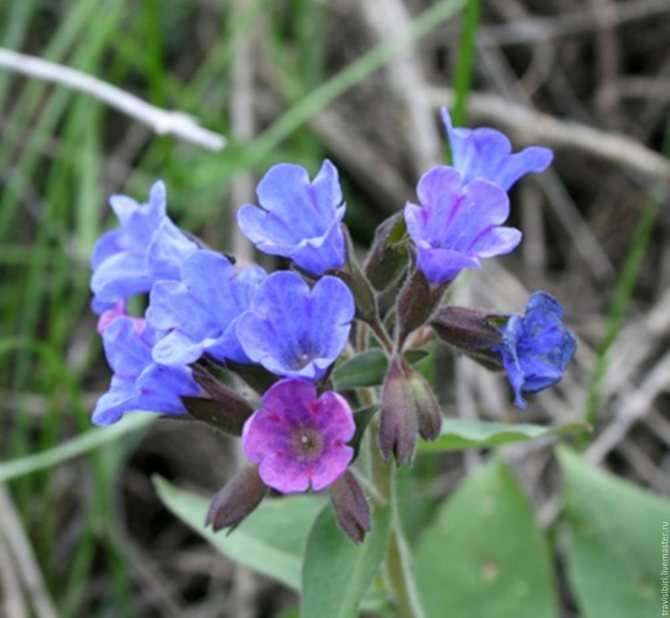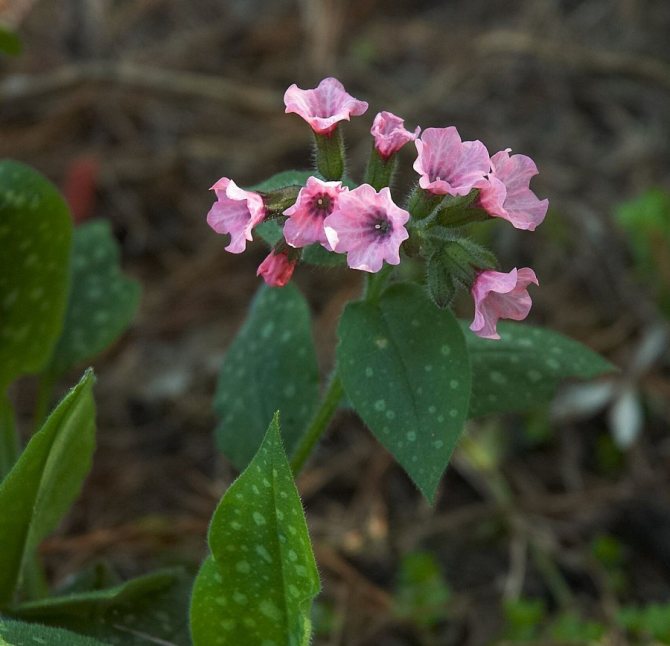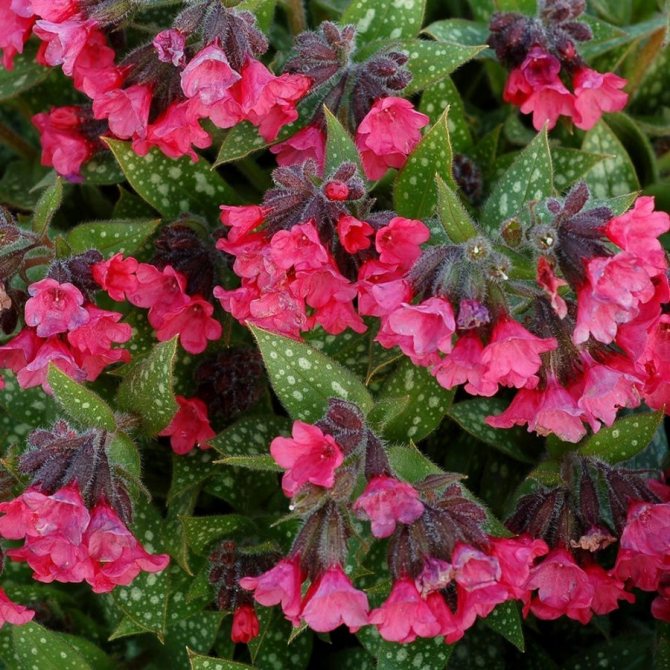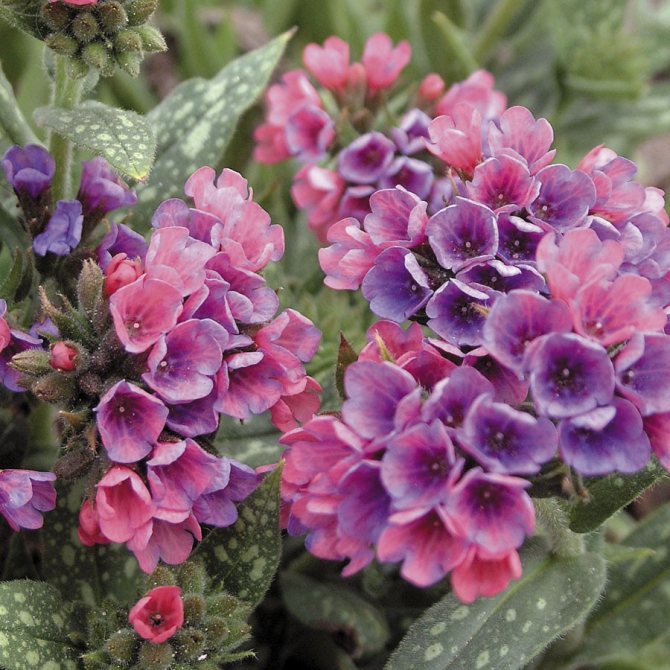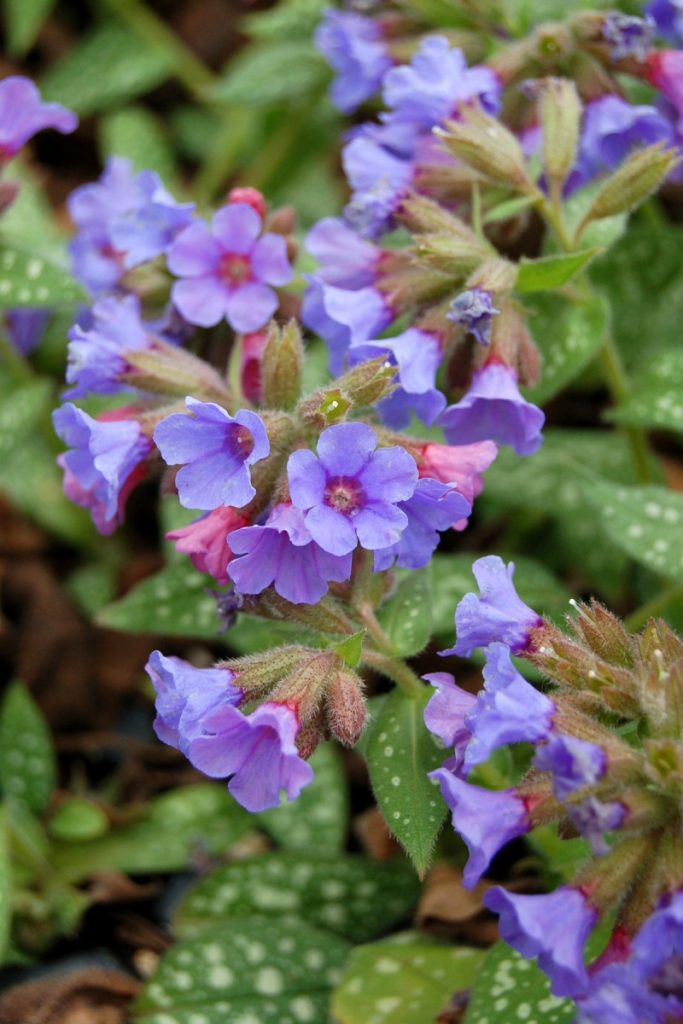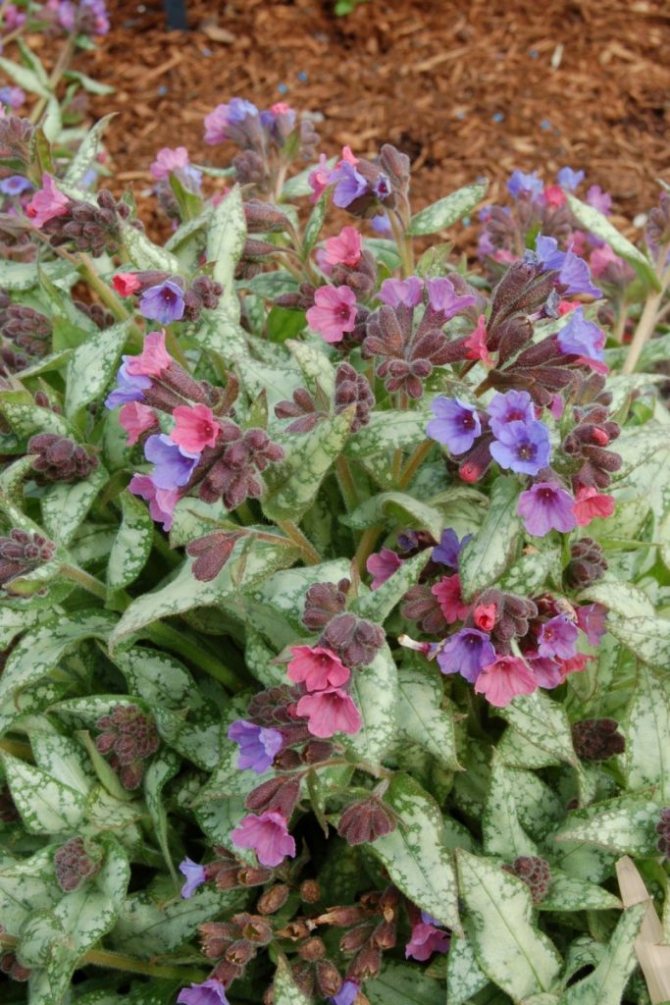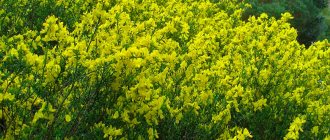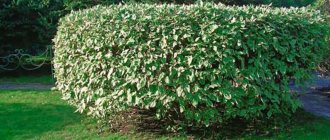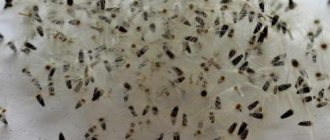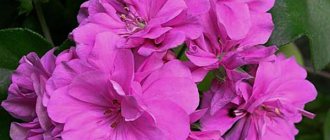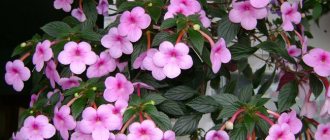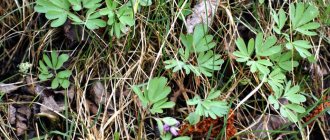Lungwort is a genus of perennial herbaceous plants of the Buranchikov family. The shape of its leaves is similar to the lungs, therefore another name for pulmonaria, translated from the Latin "pulmo" - lung. The flower has been used since antiquity as a medicine, now it is popular in landscape design, decorates rocky hills, borders, flower beds. The lungwort contains nectar, its honey is very useful. The plant is unpretentious, frost-resistant, shade-tolerant, blooms for more than a month and appears first after the snow melts.
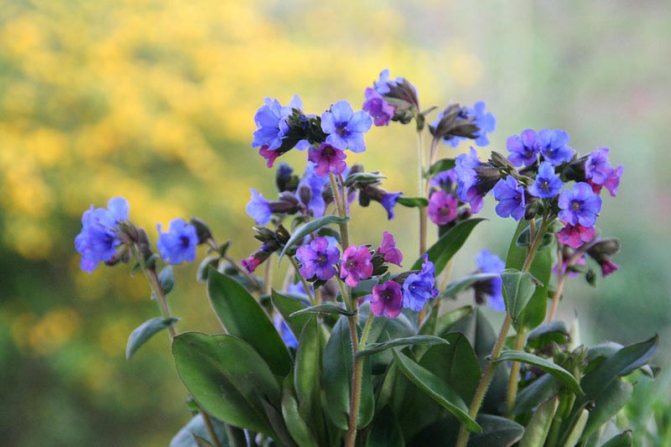
Description of the lungwort
The lungwort has a straight, branched, rough stem, pubescent, up to 30 cm, has basal and stem leaf plates. The lower ones are collected by a rosette, lanceolate, pointed, located on petioles, up to 60 cm long in some species. Leaves appear after flowering and do not fall off until frost. Upper sedentary, small. There are smooth, pubescent, spotted and monochromatic. The rhizome is long, creeping, with small tubers, located horizontally.
Bell-shaped flowers, with a calyx and a corolla, are collected in a brush at the top of the shoot. Some have short pistils and long stamens, while others - on the contrary, such a structure does not allow flowers to self-pollinate. The peculiarities of the lungwort are in the variability of the corolla color, at first it is pink, then blue. The fruit is a sickle-shaped bean with one seed inside.
Frost resistance
Planting lungwort and care in the open field is also not a hassle because this plant shows good resistance to winter frosts. And if you consider that in some regions of Russia there is only one name from winter (the temperature rarely drops to -20 ° C), then many growers do not even cover their lungwort for the winter.
But if you first planted a flower in open ground, then it is better to protect the plant in the first year of its stay in the ground by covering it with peat, pine branches or fallen leaves. So the flower will more easily endure conditions that are not yet familiar to it in winter.
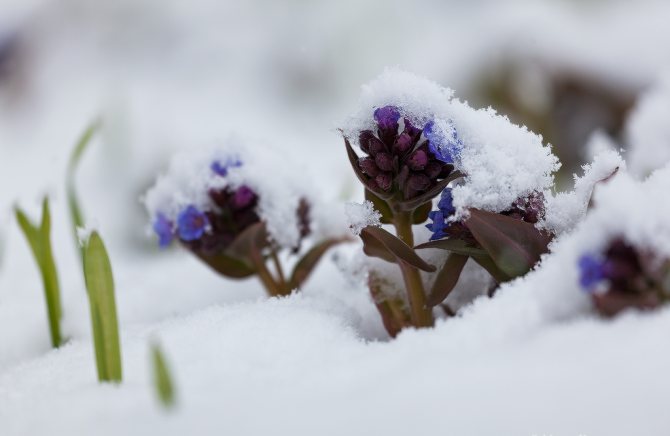

Types of lungwort
Up to 15 plant species are classified, breeders have bred about 20 varieties.
Unclear
There is a variety unclear in nature in eastern Europe, leafy plates are pubescent, rough, in white spots. It stretches up to 30 cm. Flowers in the form of bells are pink, then lilac. It opens in early spring.
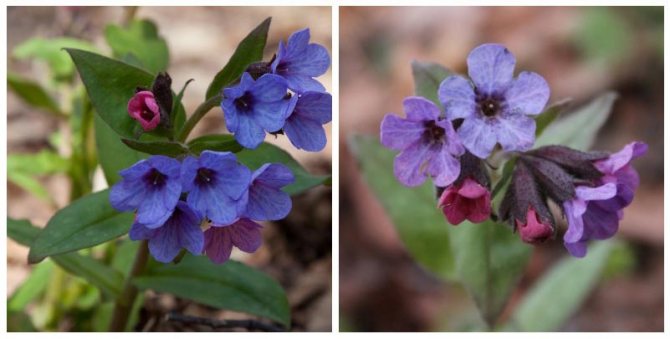

Red
Red grows in subalpine and beech forests. Leaves are shiny, monochromatic, lettuce color, blooms profusely from May to June red. Reaches 25-30 cm.
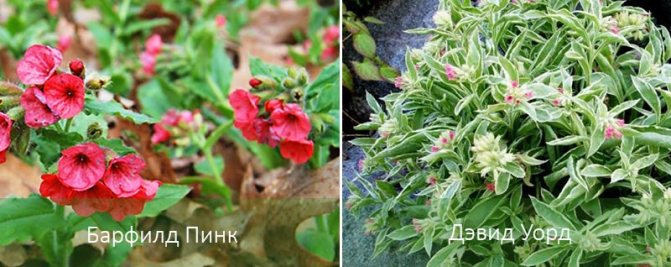

Varieties
Name
Flowers
Medicinal
The area of growth of Medicinal lungwort is Central, Eastern Europe. Shoots up to 30 cm, frost-resistant, flowers look like a bell with a double perianth, blooms from mid-May, first red, then takes on a lilac color. This valuable species is listed in the Red Book.
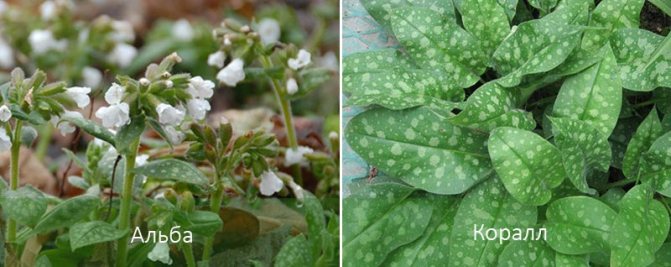

Varieties
Name
Flowers
Soft
The softest lungwort (another name) is found in the Caucasus, Altai, Eastern Siberia. Bushes up to 45 cm. Blossoms in April-May blue-purple until the end of June. The leaves are large, green-silvery, velvety. This variety is more resistant to the scorching sun.


Flap
A rare variety Valovidny grows in the Apennines, in thickets of bushes, on sand, in gravel. Leaves are silvery gray with white spots. The flowers are purple-red. It grows up to 45 cm. Poorly tolerates frost.


Long-leaved
Grows in Europe, in forests, on the banks of rivers. Reaches 25 cm. Leaves are dense, pubescent, belt-like, pointed, up to 40 cm long, below - gray-green, above - gray, spotted. Flowers change color from pink to blue. It dissolves in April.


Varieties
Name
Flowers
Sugar
The place of origin of Sugar is southeastern France, northern Italy. It grows up to 30 cm, the leaves are large, oval, green in color and with silvery spots. Blossoms in April-May, carmine purple.


Varieties
Name
Flowers
Narrow-leaved
Narrow-leaved is found in Asia Minor near rivers, in forests, its shoots are up to 30 cm. Leafy plates are oval, pubescent. Blooms from early May 20 days. The color is carmine, then turns blue.
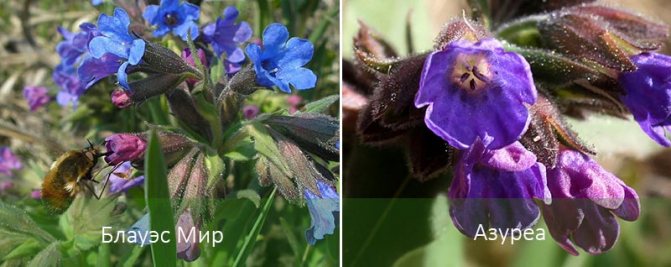

Varieties
Name
Flowers
Description of the plant
The lungwort belongs to the group of undersized flowers. Plant height does not exceed 30 centimeters. The trunk is dense, abundantly covered with small villi. The root system is well developed. Deciduous plates are of two types. The lower ones are green with light blotches, and the upper ones are monochromatic. The plates are sedentary. They are covered with villi on both sides. The flowers of the lungwort are purple, crimson or blue. It all depends on the type of plant. At the end of flowering, in place of the buds, fruits are formed in the form of single seeds. Externally, the grains are very similar to beans.
This plant is distinguished by a large amount of nectar. It is this feature that attracts bees. It should also be noted that lungwort can be used to make salads. The leaves of this plant are especially famous in the UK. They gained immense popularity due to the presence of useful trace elements that are necessary for the proper development of the body.
The lungwort is a plant whose seeds are spread by ants. This is precisely the reason for the appearance of this type of flower in the most unexpected places.
The plant is rich in:
- tannins;
- saponins;
- tanning components;
- acids (silicic, ascorbic);
- rutin;
- wax;
- flavonoids;
- iron;
- copper.
The homeland of this species is the lands of Western and Eastern Europe. Some of them can be found in Asia and Siberia. The lungwort appears in early spring, almost immediately after the snow melts. The plant grows well in shade and partial shade. In order for a flower to delight with its flowering for a long time, it is enough to adhere to the elementary rules of care.
Breeding methods and planting
Lungwort propagates by seeds and vegetatively. It can grow in partial shade, under trees, bushes, near fences.
Seeds
The seed method is rare, there is a risk that not all the characteristics of the variety will be preserved. They sow in open soil after the snow melts, at a distance of 10 cm and a depth of 3-4 cm. The soil is fertilized in advance, after the emergence of shoots, it is thinned out at a distance of 10 cm. Lungwort will bloom with this method in 2-3 years. The seeds of lungwort are carried by ants and therefore it can appear in different parts of the garden.
By dividing the bush
In March or after flowering in September, the bush is dug up, divided, and the roots are cut. There should be a growth point on each division. They are planted 35-40 cm from each other, to a depth of the same as that of the mother plant, the soil is watered, mulched.
Landing in the ground: sequence of actions
Photos and descriptions of the garden lungwort are presented in the article. How to plant a plant correctly? More about this below:
- The action takes place in early spring.
- Prepare your chosen location.
- Dig planting holes. If there are several lungwort, then the holes should be dug at a distance of 20-25 cm.
- If the site is dry, then drainage must be placed at the bottom of each hole, which can be stones or river sand. If the area is well moistened, no drainage is needed.
- When planting seedlings, purchased or grown at home, they must be carefully removed from the old container without damaging the roots.The earth can be shaken off a little from the roots of the lungwort.
- A garden flower is planted in a hole, covering the root system with earth and slightly compacting it with your hands.
- After planting the plants, they need to be watered with a little water.
- The last stage of planting and leaving the lungwort in open ground is mulching around the seedling.
Care of lungwort
It is not difficult to take care of the plant, even beginner growers can follow the basic rules:
- Water regularly, avoiding waterlogging and overdrying of the soil, especially during the formation of buds and flowering.
- If the lungwort grows in partial shade, water less frequently than flowers in the sun.
- In sunny areas around the bush, it is better to mulch the soil, so the moisture will not evaporate very quickly.
- Weed out weeds.
- Loosen the soil.
- Feed with mineral mixtures in the spring during the growth of the leaves.
- Remove last year's leaves in the spring.
- After flowering, get rid of the peduncles.
For the winter, you do not need to remove the leaves, only dry, old ones. In cold regions, cover the bushes with spruce branches, dry foliage, sawdust, and hay. Bushes are transplanted every 4-5 years.
Pruning
Lungwort pruning is carried out once a flowering season, and this procedure is aesthetic and beneficial. First of all, the peduncles, which have grown abundantly, are cut off. Cut them "at the root" so that even hemp is not left. And they do it necessarily with a sharp knife or pruner. By breaking parts of the lungwort with your hands, you can damage other stems and leaves, or even uproot the plant.
It is also necessary to regularly inspect the plant for dry leaves. They should be cut and discarded periodically.
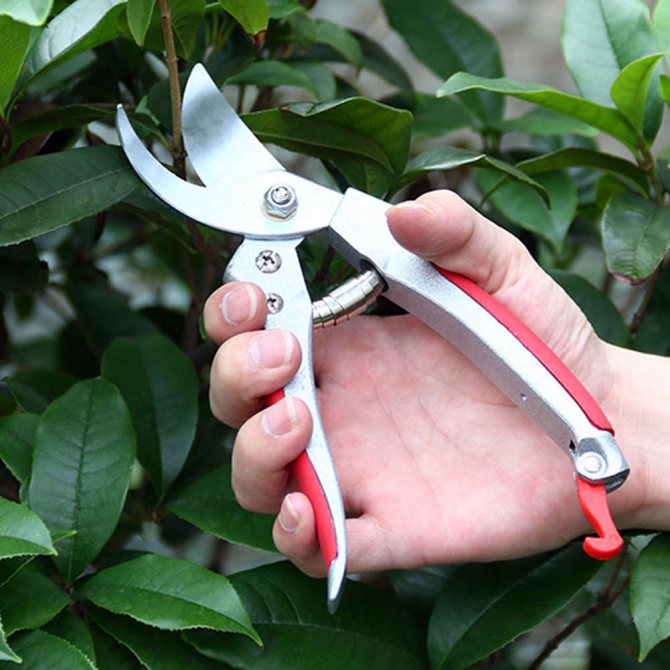

Mr. Dachnik recommends: lungwort - medicine in the flower bed
The lizard on the site is not only a beautiful flower with decorative leaves, but also a medicine that has a wide spectrum of action and is used in the complex therapy of various diseases.
Procurement of raw materials
The flowering period or before the buds open is the time of collection of the medicinal herb. The stems together with the flowers are cut, dry vegetation is removed. Tied in bundles, hanging dry in the shade. Even in the oven, strictly at a temperature of +40 ° C. Then it is ground into powder, poured into cloth or paper bags. Store dry herb in a cool, dry place.
Structure
The medicinal properties and contraindications of lungwort are due to its components. As part of the medicinal herb:
- anthocyanins;
- flavonoids;
- rutin;
- astringents;
- polyphenols;
- allantoin;
- carotene;
- alkaloids;
- vitamin C;
- mucus;
In addition: copper, manganese, iron, iodine, silicon, potassium, calcium, saponins, tannins.
Benefit
Lungwort relieves cold symptoms and has other unique properties:
- Improves the work of the heart muscle, normalizes intracranial pressure, thickens the blood, narrows blood vessels, stops bleeding.
- Relieves inflammation, promotes sputum discharge.
- Calms the nervous system.
- Softens the skin, improves the structure of hair, nails, slows down aging.
- Dilutes and removes phlegm.
- Strengthens the immune system.
- Removes toxins, toxins, eliminates inflammation of the gastric mucosa.
- Prevents thrombosis.
- Prevents malignant neoplasms
The lungwort is indispensable for the treatment of the upper respiratory tract: inflammation of the bronchi, lungs as an expectorant and relieving cough, even with tracheitis, laryngitis. Stops bleeding, helps with skin pathologies. Effective for rinsing the mouth after tooth extraction.
Due to the content of silicic acid, the herb relieves inflammation of the mucous membrane of the stomach and intestines. It relieves the symptoms of female diseases, it is used to prevent heart attacks and strokes, with pathologies of the thyroid gland, male problems with the prostate, anorexia, dysentery, hemorrhoids.
The medicinal plant helps to remove stones from the bladder, is used in cosmetology, but first you need to consult a doctor.
Traditional medicine offers many recipes for infusions, decoctions, alcoholic tinctures with lungwort. Tea is drunk during diarrhea, freshly squeezed juice with vodka for anemia, leukemia. Pathology of the bladder, kidney is treated with herbal collection.
Prepared from young leaves of medicinal herbs, obscure salads, soups. The British grow it especially for cooking.
Contraindications
Prohibit lungwort with individual intolerance to components, pregnancy, childhood, lactation, a tendency to constipation, thrombophlebitis. It is not advised to drink decoctions, infusions on an empty stomach.
The borage family lungwort perfectly takes root in our gardens. A modest herbaceous plant does not upset with whims and blooms early, almost immediately after the snow melts.
Varietal species are especially beautiful. The petals gradually change shade from bright pink to violet-blue. The leaves, located on an erect stem, are soft and velvety, covered with silvery specks.
This is not to say that the lungwort flower will become the most spectacular inhabitant of the site, however, it has a special charm. In England, it is customary to grow this plant for making salads. In young basal leaves, there is indeed a lot of vitamin C, as well as potassium, iron, manganese, calcium and other useful microelements. By the way, even in dried form, the lungwort flower is still useful, therefore it is used for salting or cooking. In addition, it has medicinal properties.
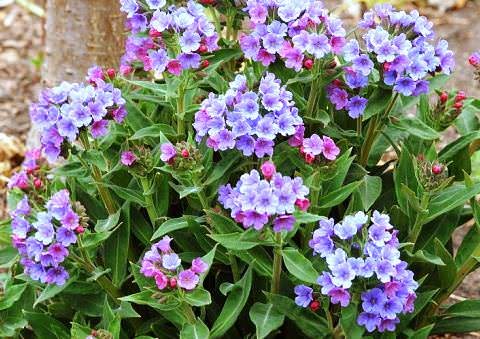

Data on the species of lungwort differ, experts call at least 12. The plant is actively pollinated, so it is very difficult to structure the genus. For medicinal purposes, it is possible to grow medicinal lungwort, the softest and most obscure. In floriculture, the most ornamental types of lungwort have proven themselves well: lumpy with silvery-white leaf blades, long-leaved and narrow-leaved, indistinct, sugar, and also red with scarlet petals.
What diseases does it help
Medunitsa has long been popular in the Urals and Western Siberia. It is especially effective in treating debilitated children with chronic lung disease. The herb replenishes potassium deficiency, increases the protective properties of the body.
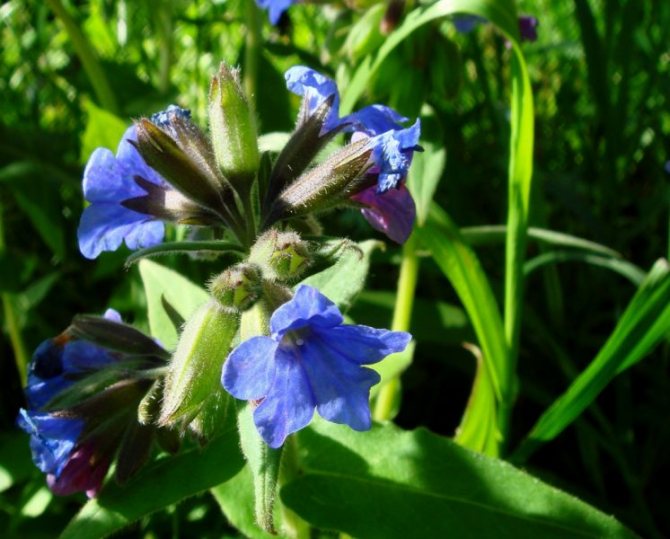

Application, for what diseases it helps:
- diarrhea;
- gastritis;
- anemia;
- pneumonia;
- bronchitis;
- tuberculosis;
- asthma;
- thyroid disease;
- cystitis and nephritis;
- skin diseases.
Warm decoction of lungwort rinse your mouth with inflammation of the oral cavity and laryngitis. When taken internally, the decoction acts as an expectorant and diuretic. Herbal compresses are used to relieve headaches.
Helps lungwort, whose medicinal properties are appreciated by the people, to restore appetite, and to cure gastritis with high acidity. It is useful for liver diseases, cramps in the intestines. Treats diarrhea as it has astringent properties.
Due to the properties of the herb to normalize the metabolism in the body, its decoction is taken for diseases of the endocrine glands. The hematopoietic effect of the plant is used to recover from bleeding, to treat anemia. Fresh leaves of lungwort are useful for vitamin deficiency, weak immunity. Juice and powder from dried leaves are used in the form of lotions and powders for purulent wounds and abscesses.
Related article: Dry cough in an adult - causes of occurrence
How to grow a lungwort flower
The scorching rays of the sun are contraindicated for the plant. The site where it is planned to plant lungwort should be in the shade or partial shade, for example, under trees or not far from buildings. Then the pattern on the leaves will be well expressed, and the flowers will surprise you with rich shades. But there are no special requirements for the soil, the perennial will take root everywhere.Of course, attention should be paid to soil drainage, water should not stagnate.
You can propagate lungwort by seeds. In the spring they are sown directly into the soil. Weeds are removed from the site in advance, it is also advisable to add manure. It is important to consider that the depth of the beds must be at least 45 centimeters. When the seedlings appear, they must be thinned out, leaving about 8 centimeters of space between the bushes.


The seed propagation method has two main disadvantages. Firstly, it will not be possible to preserve the purity of the variety; plants with a completely different color may appear. Secondly, young plants grown from lungwort seeds will bloom only after 2-3 years. Therefore, it is better to use reproduction by dividing the bush.
It is recommended to divide the perennial in early spring or in July-August. A part with a renewal bud is carefully separated from the bush and planted directly into the ground at a distance of about 20 centimeters from other specimens. The area around the planted plants is mulched using humus, then they will develop better. Young bushes are covered with foil for 5-6 days so that moisture does not evaporate so quickly.
Delenki will save you from surprises with the variety. But in the future, the plants are remarkably cross-pollinated, in order to preserve the purity of the collection, different varieties should be planted away from each other.
Landing features
The optimal place for planting a plant is a shady or semi-shady area, it is under such conditions that decorative spots are fully manifested on the leaves, and the flowers of lungwort are most brightly colored. In cases where it is not possible to plant a plant in the shade, it is best to place it under a tree or strong-growing shrub to protect it from strong sunlight.
The lungwort has no special needs in terms of soil and maintenance, it can grow in any soil. It is best to choose loose soil for the flower, where there is a sufficient layer of humus. The most comfortable time when you need to plant the sugar lungwort is the spring.
It is in the spring that the soil contains the most nutrients that will allow the young plant to grow stronger and germinate, in addition, the absence of severe cold weather will also have a beneficial effect on the young flower.
Care Tips
The lungwort is hygrophilous, it requires regular watering, especially during drought periods, but it is worthwhile to beware of stagnant water. Despite the plant's undemandingness to the soil, it is still advisable to add humus every season, and around July, when foliage is actively growing, feed it with mineral fertilizers.
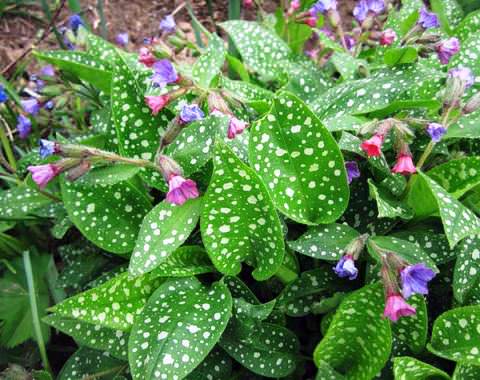

You can safely pick off old leaves. After the bush has faded, it is better to completely cut off the peduncle. For the winter, the plantings are mulched with peat, so they will endure frosts without problems. True, the soft and lumpy lungwort is additionally covered with a layer of dry foliage, these species are more delicate.
The plant is rarely sick, but sometimes it still suffers from powdery mildew. It is better to remove and burn very infected bushes immediately. If the disease has just begun to develop, it is enough to cut off the affected leaves and treat the plantings with special preparations. In addition, snails and slugs do not mind eating bushes. The less planting density and the more thoroughly weeds are removed, the less the likelihood of attacks by these pests.
Choosing a variety of lungwort
Correct planting and care of lungwort in the open field is a guarantee of necrosis and pleasant cultivation of this plant. But choosing the right place isn't everything. It is also important to determine the variety of lungwort.
By choosing a variety suitable for your site, you will provide yourself with a full-fledged adult plant. Planting material can be prepared on your own if you are an experienced florist, or you can purchase pieces of rhizome from other gardeners. Before choosing a variety, check out which varieties of lungwort are most adapted to the climatic conditions of your area.So you will protect your green wards from possible diseases and pest attacks.
For beginners in the matter of growing lungwort, it is better to turn to professionals for help, since the wrong step in preparation for planting or the wrong choice of variety will not bring the desired results.
If you have purchased lungwort seedlings, then carefully examine them - they should not have any spots and dots on the leaves and stems. And a slightly wilted look is not scary, the plant will "come to its senses" as soon as it is in the ground.
Lungwort in landscape design
In nature, a perennial grows in groups, a similar arrangement is preferable for landscape design, for example, in mixborders. Plants such as uvularia, hosts, corydalis, ferns, kupena, and various shrubs will become excellent neighbors. Perennial foliage retains its decorative effect for a long time, so a modest beauty is just an ideal choice for decorating borders and ridges.
As a ground cover plant, narrow-leaved or red lungwort is used, they will wonderfully decorate rocky compositions. The softest lungwort is suitable not only for partial shade, it can be planted in more open areas.
Medunitsa is a representative of the Burachnikov family. This is a low-growing plant, the height of which does not exceed 30 cm. The flower has a stem covered with short hairs and a rather thick rhizome. Medunka leaves are sessile, with a delicate down, the lower ones have white spots. Crimson, purple or blue bell-shaped flowers are located on the tops of the twigs.
The lungwort bears fruit in July. Plant can be seen in mixed forest, on forest edges, clearings and in bushes. In former times, the flower was considered a modest representative of the forest flora. It was he who first appeared on the edges after the snow melted.
Until recently, hardly any gardener planned to grow this plant on his site, however, thanks to the breeders who cultivated wild lungwort, now the flower beds are full of variety of different types of flowers.
The best time to land in the ground
When to plant lungwort in open ground? Photos of planting and care taken by experienced gardeners indicate that the best time for planting lungwort is early spring, when there is still time before the growing season.
It was at this time that the earth was saturated with a large concentration of macronutrients, no longer frozen and moderately moist. The last condition needs to be checked. Some land plots dry out for a long time after the snow melts, and moisture stagnation is observed. Medunitsa does not like this, the earth should be wet for her, but not damp, and even less so watery.
Medunitsa - description, planting and care
The leaves of the garden lungwort acquired a decorative look and differ in a variety of patterns... They can be speckled, with specks, dots, etc. Also, experts have achieved an extension of the flowering period up to 30 days. The color and size of the inflorescences also changed for the better. But like its forest “sister”, the garden lungwort is still a gorgeous perennial honey plant.
In nature, there are about 15 species of lungwort and another 20 bred by breeders as an ornamental garden plant. The flower has many names among the people, one of which is Pulmonaria - which means "lung". It was the ability to treat lung diseases that made the plant so popular.
Characteristic features of lungwort:
- The height of the plant, as a rule, is not more than 50 cm, although there are also specimens with a stem length of up to 80 cm.
- The rhizome is long, with small tubers.
- The leaves are lanceolate-wedge-shaped, most with a downy.
- The structure of the flowers is different: some have short pistils and long stamens, while others have the opposite. This prevents self-pollination.
- Flowers located at the very tops are always paired.
- The fruit of the plant is a sickle-shaped single-seeded pod.
And what is most interesting - on one stem and in one inflorescence can be located flowers of different tones and shades: from dark purple to pale pink. This is explained by the fact that the plant contains anthocyanins (plant pigments), which are responsible for the color of the petals. Since the acidity of young flowers is high, their petals are pale pink, and the low acidity of mature flowers gives them a dark purple or blue tint.
This is what prompted scientists to work on the creation of modern plant varieties suitable for growing in flower beds, flower beds and gardens. After all, lungwort, growing in deciduous and coniferous forests of Europe and Asia, is not suitable for cultivation in cultural conditions, since these flowers prefer moist sandy or loamy soil.
Bloom
A distinctive feature of this plant is that it blooms very quickly and pleases the eye with its primroses as early as possible.


The flowers of lungwort are paired, they are located at the top of the plant. One inflorescence can contain flowers of various shades, from pale pink to deep purple, this is due to the presence of anthocyanin pigments in the flower, which are responsible for coloring the petals.
The flowering of sugar lungwort looks very impressive and charming.
Medicinal properties
The healing properties of the plant are legendary. It is known that Paracelsus, a famous healer of antiquity, used lungwort as a remedy for pulmonary diseases. And the herbalist Hildegard Bingent, who lived in the 11th century, was one of the first to use the plant for the treatment of lung diseases.
Thanks to the various trace elements that make up the lungwort, the plant is successfully used in regulating the activity of the endocrine glands, stops bleeding and enhances the formation of blood cells. The presence of tannins in the herb explains its anti-inflammatory and astringent properties. The infusion of the plant is also used for stones in the bladder and kidneys, bloody urine and as a diuretic (for inflammation of the kidneys).
Infusions and decoctions from the plant have anti-inflammatory and diuretic properties, have wound healing and antitussive action... A leaf of lungwort, applied to the cut, promotes its early healing, showing even greater effectiveness than using plantain or Kalanchoe.
All parts of the plant are used as a healing material: leaves, roots and buds. Raw materials are dried at a temperature not exceeding 40 ° C in a well-ventilated area and stored in fabric or paper bags, after being chopped up.
Infusion of herbs is widely used in the treatment of the following diseases:
- laryngitis;
- pleurisy;
- bronchial asthma;
- bronchitis;
- cardiovascular diseases;
- uterine bleeding;
- tuberculosis;
- bronchitis;
- thrombophlebitis;
- BPH;
- diseases of the thyroid gland;
- anorexia;
- pneumonia;
- anemia;
- kidney disease;
- inflammation of the bladder;
- dysentery;
- hemorrhoids;
- purulent wounds, ulcers, abscesses.
To prepare the infusion, you need to take 1.5-2 tbsp. l. chopped dry grass and pour boiling water (2 tbsp), leave for 2 hours, strain. Take 3 times a day, 20-30 minutes before meals, 0.5 cups.
For rinsing, baths, washing and lotions, use an infusion of higher concentration (4 tbsp. L. Herbs / 2 tbsp. Boiling water).
Lungwort juice is used as an antiseptic for wounds... For the speedy healing of pustular wounds, it is necessary to grind the leaves and apply the resulting gruel to the wound.
Regardless of the duration of the use of lungwort as a therapeutic agent, no side effects were noticed.
In the treatment of lung diseases, the plant is recommended to be used in conjunction with herbal infusions that strengthen the immune system: action; rosehip; black elderberry syrup; echinacea purpurea; clover; needles; currants, etc.
To medicinal types of lungwort include the following:
- sugar honeycomb;
- red;
- long-leaved;
- softest;
- unclear;
- medicinal;
- soft.
Although all these varieties have different properties and affect the body in different ways, they are called by one phrase: medicinal lungwort.
Lungwort, let's be treated
The name comes from the Latin word ‘pulmo’ - light. In the old days, the leaves of these plants were used in the treatment of pulmonary diseases. The genus has 15 species. All lungwort grow on the Eurasian continent and are confined to deciduous and coniferous-deciduous forests.
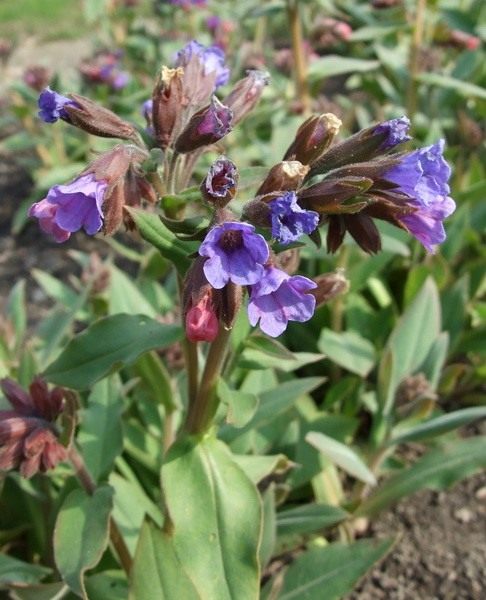

Lungwort (lat.Pulmonária) - a genus of low perennial herbaceous plants of the Boraginaceae family. The genus includes 14-16 Eurasian species.
In most species of lungwort (as in some other borage plants), the phenomenon of a change in the color of the corolla during flowering, which is not common among flowering plants, is observed: pink at the beginning, by the end of flowering, corollas turn blue.
Lungwort - especially Lungwort (Pulmonaria officinalis) - has been used as a medicinal plant since ancient times. Some species are cultivated as garden plants, many ornamental varieties have been bred.
All types of lungwort are good honey plants.
The scientific generic name Pulmonaria comes from the Latin pulmo - "lung" (pulmonalis - "lung") and is associated with the use of plants of this genus for the treatment of lung diseases.
The Russian name of the genus used in scientific and popular science literature - lungwort - coincides with the traditional Russian name of the genus and is associated with the melliferous properties of the representatives of the genus: the flowers of the plant contain a lot of nectar, moreover, this is one of the earliest melliferous plants. Sometimes there are other Russian names of the genus or its individual species: "pulmonaria" (according to the transliteration of the scientific name), "pulmonary" and "pulmonary grass" (both as a popular name for those species that were used for medicinal purposes, and as a translation of the scientific name ), "Medunika", "medunka".
Like some other plants that bloom very early, immediately after the snow melts, lungwort in some regions of Russia is called "snowdrop".
All species of lungwort are confined to the temperate zone of Eurasia, while most of the species are from Central and Eastern Europe. The widest range is in the soft lungwort (Pulmonaria mollis): this plant is distributed from Western Europe to Asia Minor and Eastern Siberia.
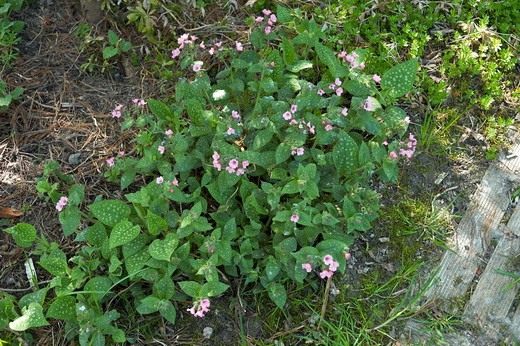

Growing
Location: in a semi-shaded or shaded, cool place. The plant does not tolerate heat, relatively hygrophilous. For species such as m. Valovidnaya, m. Medicinal and m. Red, it is necessary to allocate more space - they tend to "creep".
The soil: plants prefer sandy loam or loamy, alkaline or slightly acidic, loose soils containing humus. Narrow-leaved lungwort grows well on poor sandy soils.
Care: water in dry weather. Apply humus regularly. During the season, they are fed 1 time in the middle of summer, during the period of intensive regrowth of new leaves, with a solution of complete mineral fertilizer (15-20 g per 10 l), spending this amount per 1 m2. If necessary, chop off overgrown shoots with a shovel. When preparing for winter, varieties and hybrids of m. Valovid and m. Soft, it is advisable to cover with a leaf. Before winter, it is advisable to mulch all types with peat. In the narrow-leaved lungwort, you can not pick off the foliage.
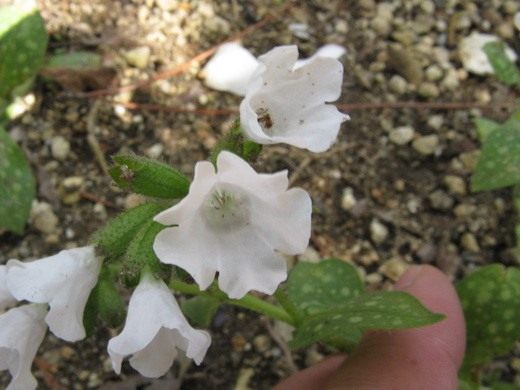

<>
Reproduction
Reproduction by dividing the bush and seeds... The softest lungwort reproduces especially well with freshly harvested seeds. Seedlings dive at a distance of 5-8 cm from each other. All species reproduce at the end of summer by segments of rhizomes with a renewal bud.Planting is carried out at a depth of 2-4 cm, planted at a distance of 15-20 cm.
Using
Use in groups, mixborders and rocky areas... Leaves do not lose their decorative effect for a long time, which makes them valuable for borders. Lungworts are unfairly rarely grown in gardens, although these bright, early-flowering, with beautiful foliage, creating a decorative cover of the plant should find their place in the garden. Red lungwort and narrow-leaved lungwort can be recommended as ground cover plants for shaded areas, and the softest lungwort will decorate flower beds both in the shade and in more open areas of the garden.
Diseases and pests: in cold, humid years, red lungwort is damaged by powdery mildew.
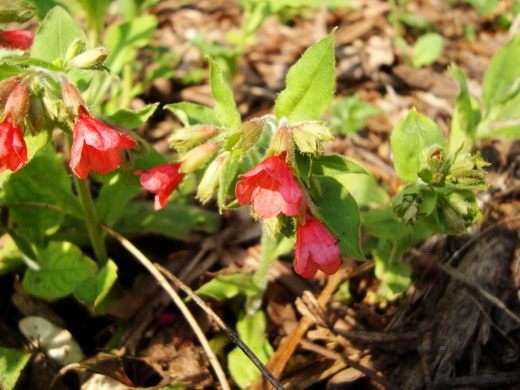

<>
Views
In floriculture, the most elegant types of lungwort are most often used. Working with them, breeders have achieved tremendous success. Consider some of these types and varieties.
Sugar lungwort (Pulmonária saccharata) grows naturally in the forests of France and Italy, forming large carpets.
Evergreen sugar lungwort has large oval leaves (up to 27 cm long, up to 10 cm wide... The dull green surface of the leaf is completely covered with silvery spots, as if powdered with frost.
Funnel-shaped flowers from pink gradually turn into blue. Flowers are placed at the end of a straight, leafy stem.
The best variety of sugar lungwort is Pulmonária argentea, or Pulmonária argentifolia... Many varieties have been obtained from this species:
- "Cambridge Blue" - with blue inflorescences;
- "Sissinghurst Wite" - with pink buds that open with white inflorescences; it is a large variety with a height of 30 cm and a diameter of 45-60 cm;
- “Mrs. Moon "- with red-purple flowers and graceful leaves;
- "Dora Barnsfeld" - with light pink flowers, very fast growth;
- "Argentea Group" - with abundant spots on the leaves, which makes them appear almost completely silvery, and the red buds reveal flowers of a rich dark purple color;
- "Silverado" - on the leaves, a large central part is silver, the edge of the leaf has a peculiar green border; on one plant you can see white, blue and pink flowers.
Foreign nurseries also offer other spectacular varieties of sugar lungwort.: Bowles Red, Janet Fisk, Margery Fish.
Lungwort obscure (Pulmonária obscura) - the most common species in central Russia. She has wide, heart-shaped leaves without spots, green.
Lungwort vague is very beautiful during the flowering period. The flowers are usually lilac, but sometimes there are specimens with white flowers (P. albiflora form) and purple flowers. Breeders have so far ignored this relatively modest species of lungwort.
Lungwort (Pulmonária officinalis) outwardly similar to indistinct lungwort, but its leaves are decorated with light spots. This species grows from Western Europe to Siberia, prefers humus-rich soils.
The leaves of the medicinal lungwort are next. Basal leaves are cordate-ovate, on long petioles, develop after flowering; stem - oblong.
Lungwort blooms in early May, covered with pink inflorescences... As the flowers fade, the corollas of the flowers turn purple.
Lungwort has been cultivated in culture for several centuries.... Its forms are known both with white flowers and with leaves without spots (var. Imnaculata).
In nurseries, you can find elegant varieties of medicinal lungwort:
- "Cambridge Blue" - with pale blue flowers
- "Coral" - with pale pink flowers
- "Sissinghurst Wtite" - with white flowers
Both the unclear lungwort and the medicinal lungwort are used in folk medicine as medicinal plants.
Filyarsky's lungwort (Pulmonária filarszkyana) - decorative species, rare in nature. This long-rooted plant from the Carpathian forests thrives in the garden; the height of the bush is 25-30 cm. But this species has a drawback: in cold and rainy summers, the bushes can be damaged by powdery mildew.
In culture, Filyarsky's lungwort actively grows, forming a dense light green cover of shiny leaves... From the beginning of May, it blooms with bright red flowers and continues to bloom profusely until the beginning of June.
The listed types of lungwort are only a small part of the decorative species that adorn our gardens.
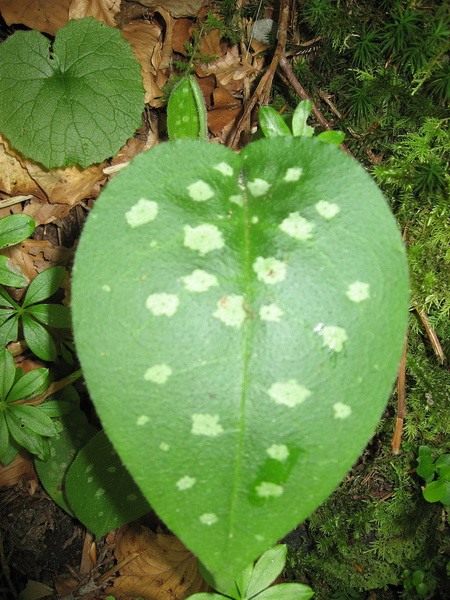

Beneficial features
The plant is widely used in folk medicine... Due to the content of various trace elements, and primarily manganese, the herb infusion regulates the activity of the endocrine glands, enhances blood formation, and stops bleeding. The lungwort has anti-inflammatory and astringent properties due to the presence of tannins in it, emollient (due to the presence of mucous substances), antiseptic and wound healing effect. Infusion is one of the best remedies for any lung diseases, hoarseness of the voice, in the treatment of laryngitis, tracheitis, bronchitis, pneumonia, bronchial asthma, cough, tuberculosis, bleeding from the lungs and gastrointestinal, dysentery, diarrhea, hemorrhoids, anemia, as well as purulent wounds, ulcers, abscesses, as a diuretic for inflammation of the kidneys, bloody urine, kidney stones and bladder.
Lungwort juice is used instead of iodine for injuries... The crushed leaves are applied to purulent wounds for the fastest healing.
To prepare the infusion, 1.5-2 tablespoons of chopped dried herbs are poured with 2 cups of boiling water, insisted for 2 hours and filtered... Take 1/2 cup 3 times a day 20-30 minutes before meals. Outwardly (for lotions, washings, baths, rinses), a more concentrated infusion is used (4 tablespoons of herbs for 2 cups of boiling water).
Side effects are excluded even with prolonged use... The duration of treatment with lungwort depends on the severity of the disease. In the treatment of pulmonary diseases, lungwort is recommended to be used in conjunction with herbs and infusions that strengthen the immune system, such as echinacea purpurea, black elderberry syrup, various herbal preparations, which can include licorice, thyme, rose hips, amaranth, strawberries, needles, currants, clover, acacia ...


Breeding species of lungwort
To date, medicinal lungwort is grown in artificial conditions, along with other breeding varieties.
There are a huge number of flowering and variegated species, the most popular of which are the following:
- Golden Haze the edges of the leaves are yellow; ·
- Mrs. Moon. A variety with lush, graceful leaves and red-purple flowers;
- Berries and Cream Majesty. The foliage is completely silvery; ·
- Little Star. · David Ward. It has leaves with a white border and silver spots;
- Silver Shimmer 's - leaves have curved edges; ·
- May Bouquet;
- Northern Lights Bowles Red;
- Argentea Group. The unbudged buds are red, the opened flowers are dark purple. Leaves are silvery, abundantly spotted; ·
- Janet Fisk;
- Dora Barnsfeld - light pink flowers; ·
- Silverado. One plant combines pink, blue and white flowers, silvery leaves with a green border.
- Margery fish
How about pests?
Many growers note the inflexibility of the flower to plant diseases. And many garden pests bypass the lungwort. The only thing that flower growers should be afraid of is the attacks of slugs and snails, which happily eat the leaves of the lungwort.
Intruders appear when the soil is waterlogged. Therefore, after heavy rains or inaccurate watering, be prepared to fight slugs or snails.
Experienced flower growers advise to fight these pests using agrotechnical methods, not chemical ones. I.e:
- loosening the soil;
- timely harvesting of weeds;
- timely cutting off the overgrown elements of the plant so that they do not attract slugs and snails.
Growing lungwort
It should be borne in mind that some types of lungwort tends to "creep" over the site (m. red, m. medicinal and m. valovidnaya), therefore, it is necessary to prepare a more spacious area for them.
When choosing a planting site, it should also be borne in mind that garden lungwort does not tolerate heat and direct sunlight.Excessively moist soil can also harm flowers.
The lungwort grows well on slightly acidic or alkaline soil, with a high humus content.
Preparation before planting lungwort in open ground
The lungwort is an unpretentious plant, but its full growth and flowering will depend on careful preparatory work. It is not for nothing that experienced gardeners say that it is enough to choose the right place for planting lungwort and further care of the culture will not amount to any ore and will not require extra labor from you. In addition, it is important to purchase or breed high-quality and healthy planting material.
Selection of varieties and seedlings of lungwort
- Pay special attention to the choice of planting material, on which the full development of the plant will depend.
- Planting material can be prepared independently if representatives of this plant are already growing on your site. Or, as an option, you can ask your friends for a deal.
- If you are first thinking about planting this unusual flowering herb, then it is best to turn to the professionals. Garden centers or agricultural firms that cultivate a plant are suitable for you.
- Give preference to varieties that are successfully zoned in the climate of your region. Such seedlings will root better and will hurt less.
- Before buying, be sure to consult with professionals about all the nuances of planting and caring for a particular variety of lungwort.
- If you purchase ready-made lungwort seedlings, do not be afraid of a little sluggish look, after planting the plant will move away.
- The main thing is that the seedlings you choose are healthy, without visible damage and yellow foliage.


Choosing a place for planting lungwort
- Take great care in finding the most suitable place for planting lungwort. This will ensure a proper fit and minimize your maintenance work.
- The lungwort is unique in that it can grow beautifully in light shade in full shade, while completely lacking in sunlight. It is in such places that the plant shows all its bright colors, the foliage looks more beautiful with unusual patterns.
- Try to find just such a place in your garden. If you have not found shady spots, set aside a garden bed for lungwort under large trees or among shrubs, where the shadow is present at least at noon.
- These plants do not tolerate stagnant moisture, so make flower beds for them on a small hill.
- Lungwort is a primrose, so it will look great with other spring flowers in flower beds and flower beds.
Selection and preparation of soil for planting lungwort
- Loose and light alkaline or slightly acidic soils are perfect for planting lungwort.
- It is also important to consider that the soil is rich in nutritious humus.
- If there are no such soils on your site, poor soils will do. You will have to constantly apply organic matter and complete mineral fertilizers.
- Before planting, it is important to thoroughly dig up and loosen the area of your choice and completely remove all weeds. At this stage, humus and complete mineral fertilizer can be added to the soil.
Care of the lungwort flower
In dry weather, the plant requires regular watering. Humus should be added from time to time. During the period of intensive foliage growth, the grass must be fed with mineral fertilizers. at the rate of 15-20 grams per 10 liters of water... A portion is enough for 1 m2. Overgrown shoots, if necessary, can be chopped off with a shovel.
Varieties and hybrids of m. Soft and m. Valovid need additional shelter for the wintering period. When preparing for winter, it is advisable to mulch all types of lungwort with peat.
In no case, do not pick off the leaves of the narrow-leaved lungwort.
Watering and mulching
Photos of garden lungwort (planting and care are discussed below), shared by flower growers, show the result of proper care. One of its conditions is watering.It should not be frequent, especially if the planting site retains moisture well. Moistening action should be carried out when the land is with clear signs of drought.
When the soil needs liquid, this is reflected in the state of the lungwort. Especially on the “red” variety. It is more susceptible to lack of moisture: the leaves lose their elasticity, sag and become withered.
In early spring, seedlings that have just been planted in open ground and already mature plants need mulching. This measure is necessary to protect the plant from drying out, overheating, pests and diseases.
Sawdust, mown grass (hay), peat, wood chips can be used as mulch. Mulching is desirable but not required.


Culinary uses of lungwort
To a much lesser extent, lungwort is known as a vegetable plant. Young basal leaves of lungwort are used to prepare vitamin salads, soups, mashed potatoes, side dishes for meat and fish dishes. With a weakened thyroid function, freshly harvested lungwort herb should be eaten daily in the form of salads.
See recipes with Lungwort:
- Vinegar with herbs "Czech"
- Lungwort salad with lemon balm
- Lungwort soup with stew
- Pies with lungwort
- Lungwort salad with green onions and eggs
- Green caviar from lungwort, wild garlic and celery
- Lungwort salad with potatoes and spicy tomato sauce
- Broth with lungwort and meatballs
Lungwort is one of the few plants that, when dried, salted and pickled, retains vitamin C. That is why in England, lungwort is bred on special plantations as a valuable vegetable crop.
In addition, it is very easily cultivated, multiplying by parts of rhizomes, dividing the bush, and also by seeds. And for its cultivation, shady and semi-shady places with loose, nutritious and moderately moist soil are suitable. It is especially important that the plants are shaded during the hottest part of the day. Let it be even a translucent shadow from other plants growing nearby.
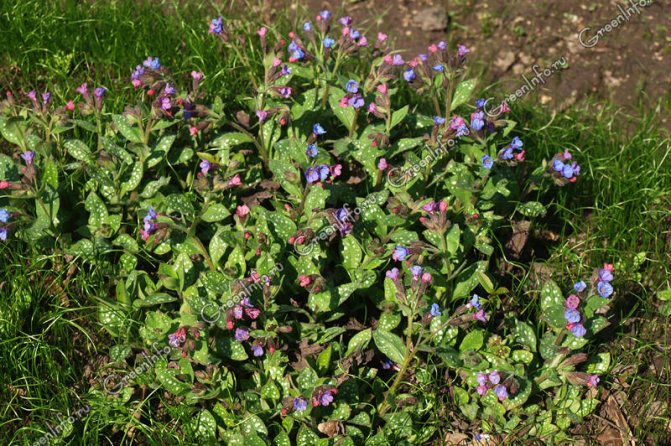

Lungwort (Pulmonaria officinalis)
Gallery: medicinal lungwort (25 photos)
Application in cosmetology
The plant is often used in cosmetology, due to the fact that the herb has anti-inflammatory, wound healing, cleansing, anti-aging properties. In addition, lungwort has the ability to stimulate hair growth, prevent and prevent hair loss.


Lungwort is the best ingredient for strengthening hair. The plant shows its properties in the form of a powder, which is used for quick healing of wounds and as an anti-inflammatory drug. Also, warm tinctures with this herb are prescribed as compresses for external use. Warm tinctures are used for washing, for acne, wounds, abrasions, abscesses.
For use in cosmetology, the aboveground part of the plant is harvested during its flowering period.
For the treatment of purulent acne
For the treatment of purulent acne, as well as reddened skin, compresses should be done. To create them, you need to take two tablespoons of dry leaves of lungwort herb, pour half a glass of boiling water. Allow time to brew, then put the still-cold gruel in gauze and attach to the lesion site.
Second option:
four tablespoons of dry lungwort herb or leaves and flowers pour a glass of boiling water, boil for 5 minutes, then strain the solution. Then moisten the napkins in this liquid and apply to the affected area.
Decoction with lungwort leaves
A decoction with leaves of lungwort is also very widely used internally for various diseases, as well as externally on inflamed skin, for compresses and rinses. To prepare it, you need 50 grams of dry grass (or a little less if you use fresh) pour boiling water in proportions of 1 to 2 or 1 to 3 (it all depends on the doctor's recommendations, because for different cases you need a different concentration of the solution).Then let the solution brew for half an hour. As soon as the time is up, the product can be consumed.
Compress
Usually, after using the broth, a herbal gruel remains, it is allowed to use it in the form of compresses, which are applied externally, in order to treat psoriasis, dermatitis, fungal rash, and so on. To prepare compresses, you need to put the porridge on cheesecloth, then wrap the edges and get a bag, which you can attach to the irritated area on the skin. The approximate time to apply the compress is 10-15 minutes. Repeat the procedure several times a day, if desired. If the compress is infused with alcohol, then it will begin to have warming and antiseptic properties.
Tincture
You can use the tincture in the same way as with other means and solutions - internally, for the prevention and treatment of diseases of the respiratory organs, and externally, for the prevention and treatment of diseases that are associated with the skin. To prepare it, take 30 grams of fresh lungwort plant, pour vodka in a ratio of 1 to 15 and let the solution brew for about 15–20 days. The infusion should turn bright yellow, red or brown. After that, strain the solution and pour into another container.
Rejuvenating salad
The ingredients are very simple, all that is required for the salad: 45-60 grams of lungwort, a bunch of green onions, a little parsley and dill, lemon juice and oil to taste and as desired. Rinse all ingredients well under running water and grind. Mix everything, season with olive oil and lemon juice. The salad is eaten every day for two to three weeks, only then a positive result will be noticeable.
Lungwort: recipes for use (video)
Medunka belongs to a rather unpretentious plant that does not require special care. Therefore, in order to prepare it, it is not necessary to go to the forest and look for its meta habitat for long hours. You can just plant it in your garden. In this case, you can not only make stocks of high-quality medicinal raw materials, but also have an excellent source of vitamins and other useful substances that this herb serves throughout the vegetative period. In addition, quite attractive first spring bouquets are obtained from it.
Features of collecting and storing medunka
For the treatment of a wide variety of diseases with the help of some types of honey, all parts of the plant are used. But, in order for them to really give the effect that is expected of them, you must first learn how to properly harvest and store them. You should also know that this the plant is in the Red Book, therefore, you need to handle it as carefully as possible.
Foliage and shoots should be harvested during bud formation or at the very beginning of flowering. The stems are cut at the root and collected in small bunches. After that, they are hung in shaded, well-ventilated places. You can spread the shoots with leaves on sheets of clean paper, the layer should be very thin. The best option would be to use a special dryer, in which the raw materials are brought to readiness, heating to no more than forty degrees.
Additionally
In addition, the pulmonary has the following effects:
- strengthens the scalp;
- accelerates the process of tissue regeneration;
- helps to cleanse the blood and improve its composition;
- improves the condition of the skin;
- strengthens the immune system;
- affects the work of the glands that are responsible for secretion;
- strengthens the walls of blood vessels;
- has a beneficial effect on the work of the heart;
- prevents the appearance of tumors;
- is the prevention of thrombosis;
- prevents diabetes mellitus;
- has a beneficial effect on the acid-base balance;
- improves the work of the organs of the reproductive system of men and women.
However, despite the many useful properties, lungwort will not always be beneficial. Contraindications must be taken into account.Decoctions and infusions based on this ingredient should not be used for atony, constipation, intestinal cramps. Sometimes mead medications cause nausea. Before using such funds, be sure to consult a doctor.
The benefits of honey from lungwort
Many beekeepers show tremendous love for lungwort. There are several reasons for this. It blooms in the spring, and more specifically, in mid-April, and is one of the earliest honey plants. The flowering period of the plant is about a month, while a huge amount of nectar is released. The flowers of this plant themselves are very fond of bees.
Honey collected from lungwort is an incredibly valuable product for the bees themselves and the entire bee family. It is during the collection of honey that the uterus lay eggs very actively. And the worker bees at this time replenish the lost strength and food supplies.
For buyers, honey from lungwort is also a very valuable product, as it helps to strengthen the body, helps to get rid of coughs and colds. But with all the positive qualities of this product, one should approach its use with great caution. This is because honey with lungwort can provoke severe irritation of the mucous membrane in the mouth.
People who are allergic to this product should also not consume honey.
Decorative properties
This primrose, due to the color of the leaves and early flowers, looks great in group plantings of early flowers in flower beds. Naturally, this shrub looks among the conifers, forming a dense carpet around them.
The lungwort is planted along the edge of the curbs, it frames them aesthetically. It is irreplaceable in alpine hills, and in group plantings of summer flowers: phlox, astilbe, daylilies. Looks very good in a composition with hosta of various varieties.
The lungwort is a flower that perfectly tolerates shade. Will be a decoration of a shady corner where other flowers do not grow. And in the spring it will delight you with the first flowers. Her gorgeous bush of bright leaves will be appropriate in any part of the garden.
Flower propagation
In order to grow a young plant, you do not need to have certain skills. There are a number of methods that make it very easy and simple to propagate lungwort.
The best option is:
- division of the bush;
- rhizome segments;
- seeds.
The propagation of lungwort by the first method is used mainly for the Sugar variety. To do this, in the fall, you need to separate several parts from the bush. It is important to make sure that each of them has kidneys. Each plant should be placed in the soil to a depth of about 4 centimeters.
The division of the rhizome is more effective, since this method allows you to preserve all the varietal qualities of the flower. You need to carry out a similar procedure in the spring. Each separated piece should be trimmed and planted in the ground at a distance of about 30 centimeters.
Seed propagation is used by few. This is due to the fact that it will be extremely difficult to preserve the characteristics of the variety. If you want to experiment, then you can use this method and you can get a unique variety that will not be similar to any of the existing species.
Proper planting and caring for lungwort in the open field is the key to a beautiful plant. If you follow the above rules, the flower will delight you with colorful buds and a pleasant aroma for a long time.
Video about the features of growing decorative lungwort
If you are a beginner florist, and there are too many areas sheltered from the sun in the garden that you cannot yet adequately decorate with whimsical shade-tolerant plants, then lungwort is the best choice for you. Planting and caring for this undemanding plant does not require any special knowledge or rich gardening experience.
The lungwort is native to the Eurasian continent, in natural conditions it grows in forest shade and partial shade under trees and shrubs.This plant retains its spectacular appearance not only during flowering, but throughout the growing season. In early spring, decorativeness is achieved thanks to delicate inflorescences of bells, changing their color from bright pink to dark blue, and sometimes almost purple. And for the rest of the season, until the moment it hides under the snow cover, the lungwort decorates the garden with its large, variably colored leaves that are not afraid of frost and, depending on the variety, can be silvery or emerald green, or even as if splashed with white paint.
In the garden, the lungwort performs not only decorative, but also useful functions: a honey plant, a medicine, a vitamin ingredient for salads.
Feature of Red and Majestic lungwort
Red lamb prefers to grow on higher elevations. The main habitat is the lands of Bulgaria, Hungary and Albania. Often the bush is used as a ground cover herb. The flowering period falls in May and lasts for 30 days. The buds are deep red.
The red louse has long rhizomes that can grow very quickly. Leaves are light green in color. Their length can reach 15 centimeters. All plates are abundantly covered with fine bristles.
Variegated varieties of lungwort have abundant flowering that can last for several months.
Lungwort Majestic is the most popular variety. The plant is very difficult to confuse with other species. The flower is distinguished by light green leaves, which acquire a golden hue closer to summer. The flowers are pink at first, but turn blue over time. The plant is resistant to various weather conditions. The bushes do an excellent job with low temperatures and hibernate well.
Majestic is the most unpretentious flower that can grow well even in the shade. With proper care, the flower can reach 30 centimeters in height, and up to half a meter in diameter. The first buds can be seen in May.
Ledwig in garden design and her flower garden partners
The plant looks great in the company of ferns, host, lilies of the valley or bought in a semi-shady corner of the garden, creating a feeling of forest coolness.
The foliage of lungwort is decorative until the very cold, therefore, the plant is decorated with borders and alpine slides, varieties with pubescent silvery leaves covered with bizarre patterns look especially amazing.
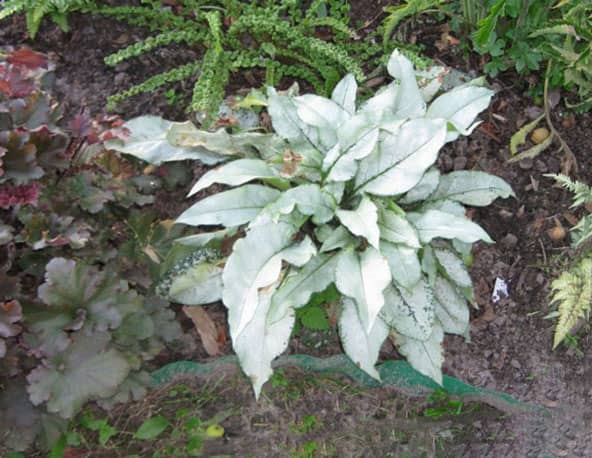

The perennial is often used to decorate the near-stem space of tall trees, especially he likes the neighborhood of oaks.
The early flowering of lungwort, when there is still no greenery on the branches, brings cheerfulness to the garden that wakes up after hibernation and fills the air space with the sweet aroma of nectar, attracting the first insects.
CherryLink plugin not found
Use in design
For landscape design of the site, the lungwort is a wonderful decoration. It goes well with conifers and various shrubs, in the spring in a garden bed or flower garden - with groves and daffodils.


It is enough to plant lungwort in shady places of the garden and it will delight others from the very beginning of spring.


Plant properties
The plant contains mucus, tannins, tannins, iron, saponins, alkaloids and ascorbic acid. Due to the content of saponins and tannins in the plant, it is best used as an emollient and expectorant for diseases such as respiratory tract infections. Medunitsa can be used for lung disease. The plant has a diuretic effect, copes well with wound healing. In addition, lungwort fights inflammation and is an antiseptic. The plant is able to improve immunity. The lungwort restores blood.
Types of medicinal compositions with lungwort
There are several types of medicinal compositions, which include the herb lungwort, its flowers, stems and more.Also, they often contain other herbs and plants, which have a very positive, calming, healing effect on the human body. What is important, they are very easy to cook on their own, and anyone can do it. Below are some of them.
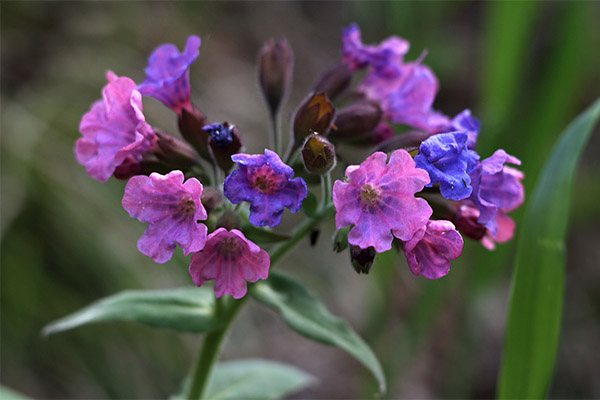

Tincture
Tincture of lungwort helps to cope with respiratory diseases, bronchitis, bronchial asthma, pneumonia, anemia. For its preparation, pre-dried raw materials are used (different amounts, it all depends on the recipe), which must be poured with boiling water. The liquid should be infused for 14 or more days. Then strain the solution. The tincture is allowed to be used internally several times throughout the day before meals and externally - for rinsing, rinsing, compresses.
Decoction
The decoction is a mild, expectorant agent that is used for coughs, colds, and respiratory problems. In order to prepare a decoction, you need to pour a handful of dry lungwort herb with half a liter of water. Bring the liquid to a boil, cook for 15–20 minutes. After cooking, strain the liquid and use it a couple of times throughout the day.
Tea
To prepare it, you need fresh or dry parts of the lungwort plant. They just need to be brewed instead of regular tea. The lungwort has a huge variety of useful and healing properties. Taking tea from this herb is the prevention of various diseases, it will be useful for both children and adults.
The juice
The juice of this plant is very useful for any skin problems due to the fact that it has many beneficial substances. Juicing is pretty simple. It is necessary to take a small amount of lungwort (if you want more juice, it is better to take the grass that was picked later), then use a technique (blender) or a plate and spoon to turn it into gruel. Then strain the resulting gruel through a sieve. You get juice, which must be diluted with water in a ratio of 1 to 10. You can drink three teaspoons a couple of times a day.
We advise you to read:
types of medicinal compositions with alfalfa
To read
Photo of lungwort
Plant nutritional base
Seven days before planting a plant in an open area, you need to prepare the soil by adding the necessary fertilizers in the form of humus when digging. In the month of July, you can arrange feeding of lungwort with the help of mineral additives (20 g of fertilizer per bucket of warm water).
Choosing a site for planting and preparing the soil
What else flower growers love lungwort is for its ability to grow in partial shade and even in the shade.
If there is no such place in your garden, plant the plant where it will be protected from the sun at least at noon, for example, under trees. Despite the fact that lungwort is considered a moisture-loving crop, it does not grow well in wetlands. In this case, it is better to arrange a high bed for the lungwort.
The plant does not impose special requirements on the soil, but when grown on fertile loamy-alkaline and slightly acidic soils, it grows and looks especially good. Therefore, it is advisable to add organic matter to poor soils before planting. And only the narrow-leaved lungwort grows well on poor sandy soil.

